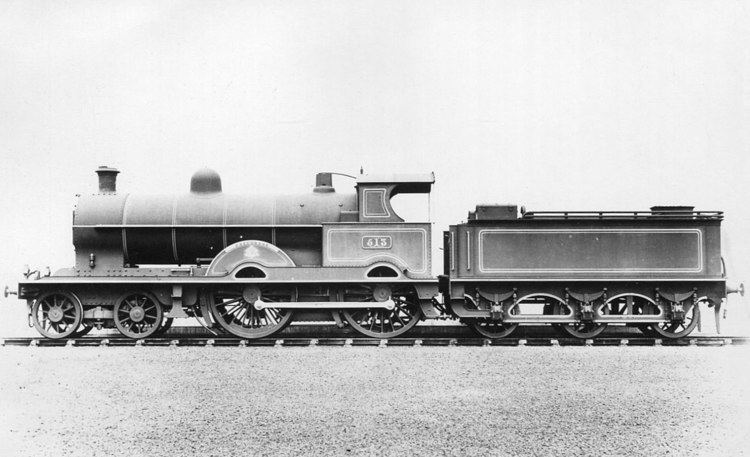Power type Steam Total produced 130 | Build date 1904–1907 | |
 | ||
Serial number 4415–4419, 4440–4504, 4510–4549, 4660–4679 | ||
The London and North Western Railway (LNWR) Precursor Class, the second to be known by that name, was a class of 4-4-0 steam locomotives.
Contents
History
The class were introduced by George Whale in 1904 and 130 examples were built by Crewe Works up to 1907. Their introduction allowed Whale to phase out his predecessor Francis Webb's unreliable compound locomotives. They were essentially a larger version of Webb's LNWR Improved Precedent Class. As built, they were saturated, though some were later superheated.
Whale's Experiment Class 4-6-0 were essentially an extended version built from 1905. An Atlantic tank engine version, Precursor Tank Class was also built from 1906. The Precursors were developed by Charles Bowen-Cooke into the superheated George the Fifth Class 4-4-0 (1910). The main visual difference was that the Precursors had separate splashers over each of the driving wheels while the Georges had combined splashers that covered both pairs.
The LNWR reused numbers and names from withdrawn locomotives, with the result that the numbering system was completely haphazard. Starting with the first of the class 513 Precursor in 1913, were given superheaters, the process continuing until just after grouping in 1923. Most of the superheated engines were also converted from having slide valves to piston valves.
This resulted in two main subclasses; saturated locomotives with 19 by 26 inches (480 mm × 660 mm) cylinders, and superheated locomotives with 20.5 by 26 inches (520 mm × 660 mm) cylinders. The LMS gave them the power classification 3P. The saturated engines were given the LMS numbers in the 5187–5266 series, though not all survived long enough to receive them. The superheated engines were given the LMS numbers 5270–5319 (5267–5269 were not used).
The LMS continued to superheat engines until 1926, these rebuilds retained their LMS number. Also, three superheated engines became saturated via boiler swaps.
Withdrawals of the saturated engines started in 1927 and the last engine in as built condition was withdrawn in 1935. The four superheated engines which retained slide valves were withdrawn 1931–1936. Withdrawals of the superheated engines with piston valves began in 1935. Those not withdrawn had 20000 added to their numbers 1934–1937 to make room for Black Fives.
At the end of 1939 only seven survived. Only a single example was inherited by British Railways in 1948, 25297 Sirocco, which was withdrawn in 1949. Despite being allocated the number 58010, that was never applied.
None was preserved.
